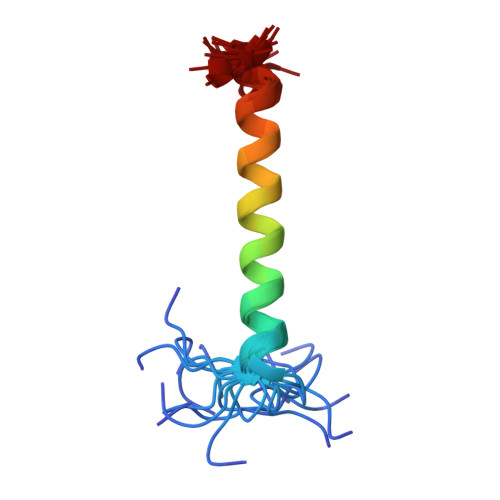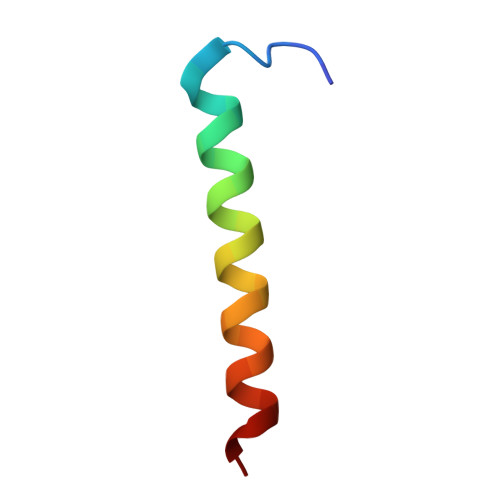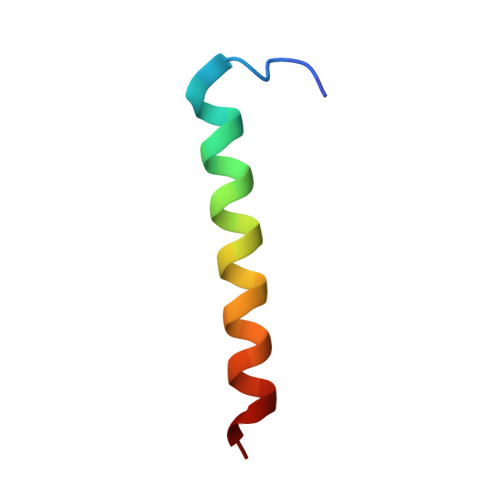High-resolution analysis of the conformational transition of pro-apoptotic Bak at the lipid membrane.
Sperl, L.E., Ruhrnossl, F., Schiller, A., Haslbeck, M., Hagn, F.(2021) EMBO J 40: e107159-e107159
- PubMed: 34523144
- DOI: https://doi.org/10.15252/embj.2020107159
- Primary Citation of Related Structures:
7OFM, 7OFO - PubMed Abstract:
Permeabilization of the outer mitochondrial membrane by pore-forming Bcl2 proteins is a crucial step for the induction of apoptosis. Despite a large set of data suggesting global conformational changes within pro-apoptotic Bak during pore formation, high-resolution structural details in a membrane environment remain sparse. Here, we used NMR and HDX-MS (Hydrogen deuterium exchange mass spectrometry) in lipid nanodiscs to gain important high-resolution structural insights into the conformational changes of Bak at the membrane that are dependent on a direct activation by BH3-only proteins. Furthermore, we determined the first high-resolution structure of the Bak transmembrane helix. Upon activation, α-helix 1 in the soluble domain of Bak dissociates from the protein and adopts an unfolded and dynamic potentially membrane-bound state. In line with this finding, comparative protein folding experiments with Bak and anti-apoptotic BclxL suggest that α-helix 1 in Bak is a metastable structural element contributing to its pro-apoptotic features. Consequently, mutagenesis experiments aimed at stabilizing α-helix 1 yielded Bak variants with delayed pore-forming activity. These insights will contribute to a better mechanistic understanding of Bak-mediated membrane permeabilization.
Organizational Affiliation:
Bavarian NMR Center at the Department of Chemistry, Technical University of Munich, Garching, Germany.


















